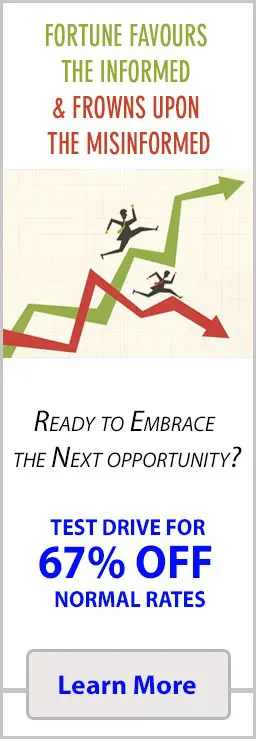Markets Will Crash, So What? Crash is the Code Word For Opportunity
March 17, 2025
In the last century, markets have crashed 38 times, yet the S&P 500 has risen over 17,000%—proving that crash anxiety destroys more wealth than crashes themselves.
The Fear Industry: Manufacturing Market Anxiety
The financial media ecosystem thrives on a single emotion: fear. Headlines warning of imminent market collapses generate clicks, views, and advertising revenue at a rate that positive stories cannot match. This economic incentive creates a perpetual doom machine, churning out predictions of the next great crash with assembly-line efficiency.
Each year, prominent economists, strategists, and self-proclaimed gurus confidently announce the coming catastrophe, citing everything from technical indicators to political developments, fundamental valuations to macroeconomic trends. When these predictions inevitably fail to materialize, they quietly pivot to new doomsday scenarios while audiences remain captivated by fresh harbingers of financial apocalypse.
As Warren Buffett observed, “Predicting rain doesn’t count; building arks does.” The wisdom here is profound: acknowledging that markets will periodically crash merely states the obvious. The valuable insight comes from understanding how to position oneself to benefit from—rather than be destroyed by—these inevitable market cycles.
The Futility of Crash Prediction
The historical record of market crash predictions reveals an uncomfortable truth: even the most sophisticated forecasting models fail spectacularly at timing market downturns. Consider the evidence:
– Nobel Prize-winning economists have repeatedly missed major market turns
– Quantitative models with billions in research behind them have failed to predict crashes
– Even insiders with privileged information cannot consistently time market movements
This persistent failure stems from a fundamental misunderstanding of market dynamics. Markets don’t crash because of identifiable singular events or triggers; they crash because of complex, nonlinear interactions between countless variables that defy simplistic prediction.
Peter Lynch captured this reality perfectly: “Far more money has been lost by investors preparing for corrections, or trying to anticipate corrections than has been lost in corrections themselves.” The opportunity cost of defensive positioning while awaiting a prophesized crash that doesn’t materialize often exceeds the losses one might have suffered in an actual downturn.
The State of the Crowd: The Only Timing Signal That Matters
While predicting precise crash dates remains impossible, understanding market psychology provides invaluable insight into potential opportunities. The collective emotional state of investors—what we might call “the crowd”—creates recurring patterns that the disciplined investor can exploit:
When the crowd exhibits maximum fear, markets typically offer maximum opportunity. When euphoria reigns supreme, risk reaches its zenith. This fundamental relationship between sentiment and value creates actionable intelligence far more reliable than economic forecasts or technical patterns in isolation.
Howard Marks articulated this principle eloquently: “The most profitable investment actions are by definition contrarian: you’re buying when everyone else is selling, and vice versa.” This contrarian approach requires monitoring the psychological state of market participants rather than obsessing over potential crash triggers.
Several reliable indicators help gauge crowd sentiment:
- Put/Call ratios showing extreme defensive positioning
- Investor Sentiment Surveys Reaching Historical Extremes
- Financial media coverage turning uniformly apocalyptic
- Retail investor fund flows demonstrating panic
- Insider buying accelerates during periods of maximum pessimism
These signals don’t predict crashes; they identify situations where crowd behaviour has driven prices to unsustainable extremes—creating opportunities regardless of whether a full-scale crash materializes.
Technical Analysis: Fine-Tuning Crowd Psychology Signals
Properly understood, technical analysis serves not as a crystal ball but as a barometer of crowd psychology. Chart patterns reflect the aggregate emotional reactions of market participants, allowing astute investors to identify potential turning points in sentiment.
Several technical approaches help fine-tune crowd psychology signals:
– Market breadth indicators showing extreme oversold conditions
– Volume patterns revealing capitulation selling
– Moving average relationships highlighting deviation extremes
– Volatility measurements signalling maximum fear
A renowned technical analyst, John Murphy, notes: “Charts don’t cause markets to move in one direction or another. They simply reflect the bullish or bearish psychology of the marketplace.” This insight transforms technical analysis from attempted fortune-telling into a valuable tool for measuring crowd sentiment at extremes.
Cognitive Biases: Why We Focus on Rubbish
Our evolutionary programming predisposes us toward fear. Our ancestors who worried excessively about potential threats were more likely to survive than those who remained complacent. This biological heritage manifests in modern investors through several cognitive biases:
– Availability bias: Dramatic market crashes remain more mentally “available” than slow, steady gains
– Loss aversion: We feel losses approximately twice as intensely as equivalent gains
– Recency bias: We overweight recent events when forecasting the future
– Confirmation bias: We seek information confirming our existing fears
– Narrative fallacy: We construct compelling stories to explain random market movements
Daniel Kahneman, Nobel Prize-winning psychologist, explained: “The idea that the future is unpredictable is undermined every day by the ease with which the past is explained.” This psychological tendency leads investors to construct elaborate narratives explaining why the next crash is imminent despite overwhelming evidence that such predictions are futile.
Understanding these biases doesn’t eliminate them but provides the metacognitive awareness necessary to counteract their influence on investment decisions.
Historical Perspective: Crashes as Opportunities
Examining history’s greatest investors reveals a striking pattern: they viewed market crashes not as disasters to be feared but as rare opportunities to be seized.
When the 1973-1974 bear market decimated stock values, Warren Buffett famously declared he felt like “an oversexed man in a harem.” While others panicked during the 2008 financial crisis, he invested billions in companies like Goldman Sachs and Bank of America at distressed prices. These investments later yielded billions in profit.
Seth Klarman largely built his legendary reputation at Baupost Group by deploying capital aggressively during periods of market distress. His approach wasn’t based on predicting crashes but on preparing psychologically and financially to capitalize on them when they inevitably occurred.
Numerous studies, even more instructive, show that investors who simply maintained their regular investment schedule through major market crashes ultimately achieved superior returns compared to those who attempted crash avoidance.
Case Studies in Crash Obsession
The real-world consequences of crash obsession appear in numerous cautionary tales:
– “Crash prophets” who correctly predicted the 2008 financial crisis but then missed the subsequent 400%+ market recovery by remaining pessimistic
– Hedge funds that thrived during the crash but collapsed afterwards due to persistent bearishness
– Retail investors who exited markets in 2009, 2011, 2016, and 2020 on crash fears, missing historic rallies
Ray Dalio addresses this psychological challenge: “The biggest mistake investors make is to believe that what happened in the recent past is likely to persist.” This applies particularly to crash psychology, where recency bias amplifies our perception of risk following market declines.
Perhaps most telling is the story of market timer Elaine Garzarelli, who famously predicted the 1987 crash but subsequently failed to replicate this success despite considerable resources and expertise. Her experience illustrates the fundamental impossibility of building consistent investment success around crash prediction.
Smart Money Strategies for Inevitable Market Turbulence
Rather than futile attempts at crash prediction, sophisticated investors adopt several practical approaches to navigate market volatility:
- Maintain permanent crash preparation through appropriate asset allocation
- View periodic market declines as expected features rather than anomalies
- Build cash reserves during periods of market euphoria
- Deploy capital gradually during periods of extreme pessimism
- Focus on business fundamentals rather than price movements
George Soros captures this balanced approach: “It’s not whether you’re right or wrong that’s important, but how much money you make when you’re right and how much you lose when you’re wrong.” This risk-reward perspective emphasizes position sizing and opportunity cost rather than binary crash predictions.
The smartest investors recognize that, while inevitable, market crashes represent transient phenomena within a long-term upward trajectory. They prepare not by attempting to time these events but by structuring their portfolios and psychology to capitalize on them.
The Psychological Preparation Edge
Beyond strategies and tactics, successful navigation of market crashes requires significant psychological preparation:
– Developing emotional resilience to act contrary to prevailing sentiment
– Training oneself to view volatility as opportunity rather than threat
– Cultivating patience during extended periods of market irrationality
– Building decision-making frameworks that function under stress
– Creating accountability mechanisms that prevent panic-driven actions
As Charlie Munger observed, “The first rule of compounding is never to interrupt it unnecessarily.” This principle applies powerfully during market crashes when evolutionary instincts scream for protective action precisely when the opportunity is greatest.
Practical Applications for Individual Investors
For individual investors navigating this challenging psychological terrain, several practical approaches emerge:
– Automate regular investment contributions to continue through market turbulence
– Develop a written investment policy statement before crashes occur
– Create rules-based frameworks for increasing investment during declines
– Limit consumption of financial news during periods of market stress
– Focus on business fundamentals rather than price movements during volatility
Jack Bogle offered pa erspective that perfectly captures this approach: “Time is your friend; impulse is your enemy.” This patience allows investors to view market crashes as fleeting opportunities rather than existential threats.
Media Literacy in the Age of Crash Porn
Developing sophisticated media literacy becomes essential in an environment saturated with crash predictions:
– Recognize that financial media incentives align with generating fear rather than providing perspective
– Understand that predictive track records rarely receive proper scrutiny
– Acknowledge that dramatic predictions receive disproportionate attention regardless of accuracy
– Remember that even genuine experts have proven inability to time crashes consistently
– Realize that discussing potential crashes generates more engagement than analyzing opportunities
This literacy doesn’t require abandoning financial media entirely but developing a discriminating eye for separating valuable information from exploitative fear-mongering.
The Mathematics of Recovery: Why Crashes Don’t Matter Long-Term
For long-term investors, the mathematical reality of market crashes proves less significant than our psychological reaction suggests:
– A 20% market decline followed by a 25% gain returns to breakeven
– Historical recoveries from major crashes typically occur within 3-5 years
– Dividend reinvestment during crash periods dramatically accelerates recovery
– Dollar-cost averaging through downturns mathematically lowers average share purchase price
– Time in the market overwhelmingly outperforms timing the market over decades
Bernard Baruch crystallized this wisdom: “Don’t try to buy at the bottom or sell at the top. It can’t be done except by liars.” This insight liberates investors from the impossible task of crash prediction and redirects focus toward the manageable goal of capitalizing on whatever market conditions present themselves.
Conclusion: From Fear to Opportunity
The market will crash again. This statement requires no special insight—it merely acknowledges the inevitable cyclical nature of financial markets. The valuable perspective comes not from predicting when these events will occur but from preparing psychologically and financially to view them as opportunities rather than disasters.
The investors who build significant wealth over decades aren’t those who successfully dodge every market downturn but those who maintain the emotional discipline to continue investing through turbulence—and the psychological preparation to increase their commitment precisely when others surrender to fear.
As Benjamin Graham, the father of value investing, noted: “The investor’s chief problem—and even his worst enemy—is likely to be himself.” This profound insight recognizes that our psychological reactions to market volatility, rather than the volatility itself, determine our ultimate financial success.
By shifting focus from the futile pursuit of crash prediction to the productive practice of preparation, investors transform market crashes from objects of dread into catalysts for accelerated wealth creation. The market will indeed crash again—and the prepared investor will quietly welcome the opportunity.













